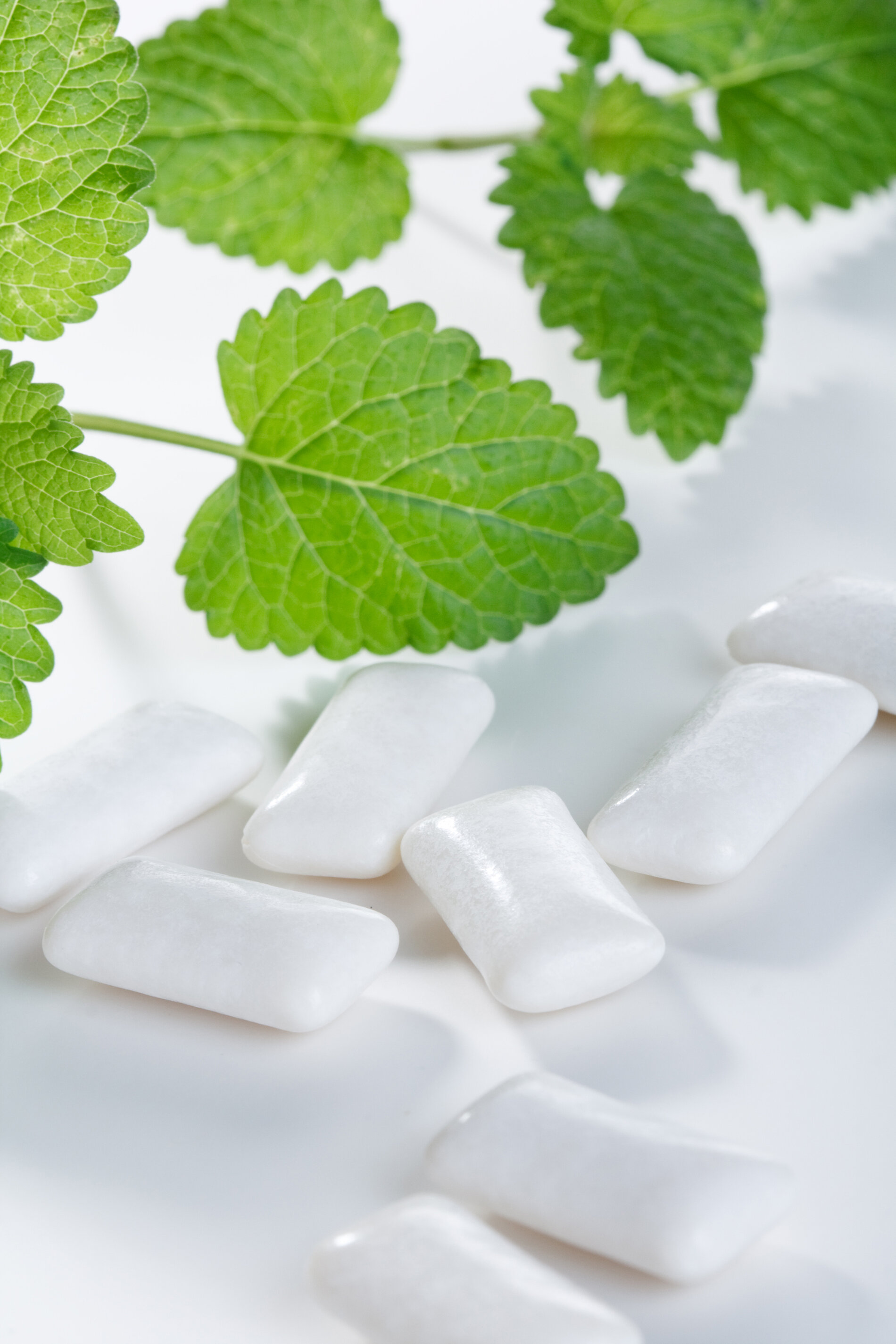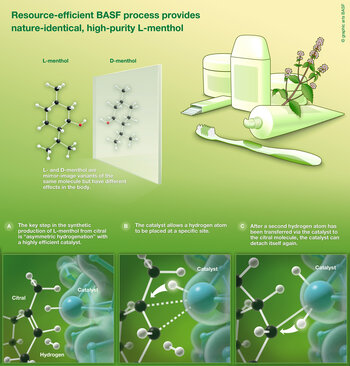Menthol is the very essence of freshness. Whether in toothpaste, chewing gum or candies, the minty taste of the world's most-sold flavor ingredient can be found in countless everyday products. But menthol owes its popularity not only to its fresh taste, but also to its cooling effect on the skin and mucous membranes. This is why it is often used for pharmaceuticals and cosmetics like cooling ointments, inhalations, deodorants and shower gels. The worldwide demand of 25,000 to 30,000 metric tons per year already exceeds the available supply – and is constantly growing because more and more new products contain menthol. BASF will be putting the world's largest production plant for nature-identical menthol into operation in summer 2012.A completely new process means it can be produced reliably and in consistently good quality.
Originally, pure menthol had been obtained from corn mint (botanical name: Mentha arvensis). But plant-based production has drawbacks; for example, harvest yields and product quality can vary depending on climatic conditions, resulting in supply shortages.
Menthol has also been manufactured synthetically since 1973. In chemical terms, it is a cyclic hydrocarbon with an alcohol group which at room temperature is a colorless solid. Previous chemical production methods, however, have certain disadvantages: either they require very complex, multi-step syntheses, or they yield not only the desired, naturally occurring L-menthol but also the same amount of a by-product called D-menthol which, depending on the intended use, has to be laboriously removed from the mixture. L- and D-menthol are variants of the same molecule, but have a mirror-image structure in relation to each other, like the right and left hand. Scientists call these molecules "enantiomers". The different structure means that L- and D-menthol have different effects in the body. D-menthol, for example, has a less pronounced cooling action. A mixture of the two variants, known as DL-menthol, is required mainly for products in which the cooling effect is not predominant, for example in certain flavoring ingredients.
BASF has now developed a new process based on the aroma chemical citral which is already produced in BASF's Verbund system. "One of the key steps in the new process is called asymmetric hydrogenation," explains BASF research scientist Dr. Rocco Paciello. "For this purpose we have developed a special, highly efficient catalyst system which ensures that mainly just a certain enantiomer is synthesized from the citral." In two further synthesis steps, this intermediate is then used to produce the L-menthol. Another advantage of this technique: it is a continuous process in which substances are constantly added and removed so therefore it has no downtimes. This not only saves time but is more resource-efficient because more L-menthol with a purity of at least 99.7 percent can be produced using the same amount of starting materials.
In summer 2012, the new production plant for L-menthol will come on stream at BASF's Ludwigshafen site to meet the high global demand that can no longer be adequately met by plant-based manufacture alone. For Givaudan, the world's largest producer of flavors and fragrances, which supplies numerous cosmetic and food, both the security of supply and the quality of the menthol are of decisive importance: “Menthol is probably the most important flavoring ingredient used in oral care products. It is present in almost all toothpastes, mouth-washes and other oral care products and makes for fresh breath and a clean feeling in the mouth," explains Clare Collett-Williams, Head of Oral Care at Givaudan UK Ltd. "For us it is absolutely essential always to have an adequate supply of menthol of consistently high quality," emphasizes Collet-Williams. Exactly this will be achieved with BASF's new production process: high purity, nature-identical menthol in sufficient quantities, not just for dental and oral care products, but also for perfumes, ointments to relieve cold symptoms or even grill sauces.



